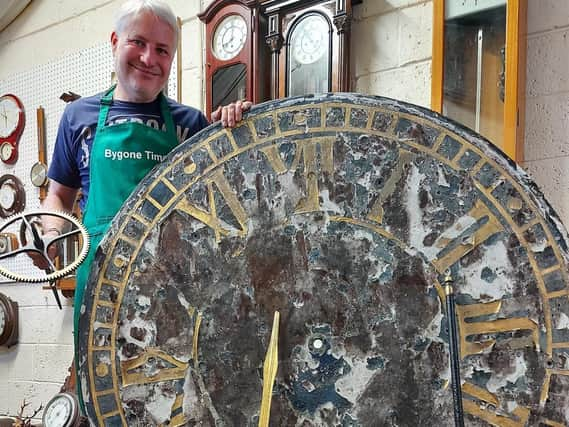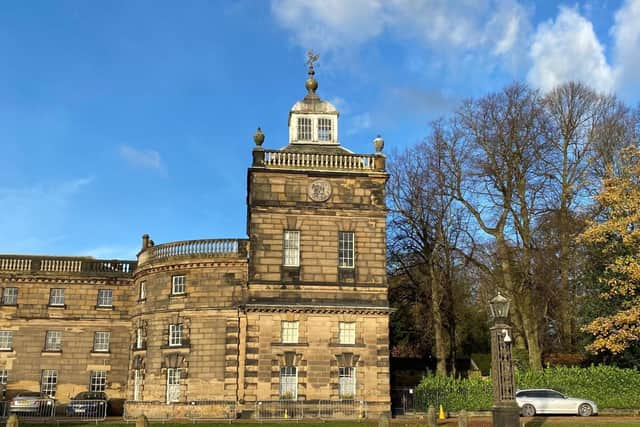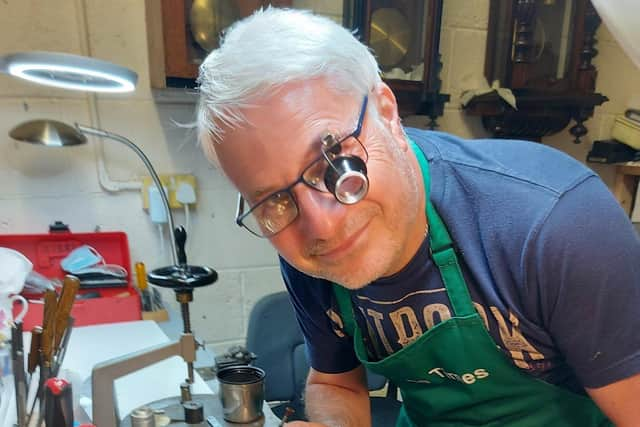Self-taught Barnsley timepiece expert repairs Wentworth Woodhouse clock that dates back to 1710 and hasn't chimed since 1948


The clock on the East Front of the Grade I-listed mansion near Rotherham was manufactured in 1710 to keep time for the Fitzwilliam family, six years before their earldom was even created.
The giant, two-faced timepiece pre-dates the actual building of the Palladian frontage itself, and it is believed that the baron at the time acquired it during his travels.
Advertisement
Hide AdAdvertisement
Hide AdNow an expert based at nearby Elsecar Heritage Centre - on the site of the Earls Fitzwilliams' old iron foundries - has returned the clock to working order free of charge as part of the renovation of the North Quadrant of the building.


Andrew Bates of horology business Bygone Times is a self-taught repair man who was a dental technician before training at the British Horological Institute.
He believes the clock stopped working in the 1950s - by which time the remaining Fitzwilliams had leased Wentworth to a women's PE college - but that it last chimed in 1948 to mark the funeral of the eighth Earl, Peter Fitzwilliam, following his death in a plane crash. He was the last of the direct male line and the earldown became extinct by the 1980s.
Mr Bates has restored clocks at Darfield Museum. Wombwell Town Hall, jewellers Benjamin Harral of Barnsley and John Mason's in Rotherham, but the Wentworth clock is the oldest he has ever worked on.
Advertisement
Hide AdAdvertisement
Hide AdHe researched its origins and found it was made by master clockmaker Nicholas French in Warwick in 1710. The building of the East Front was not completed until 1760.


“I like to think the Marquess bought it on his travels and kept it until he found exactly the right place for it,” said Mr Bates.
“It’s an honour to restore important items of local history and this is a beautifully made clock.
“Nicholas French put real care into it. There are some lovely flourishes on the mechanical pieces which he took the time to do, even though they would only ever be seen by another clock restorer.”
Advertisement
Hide AdAdvertisement
Hide AdHe found there was very little wrong with the clock, despite its age.
“The only reason it wasn’t working was because it was very mucky and hadn’t been serviced since the 1950s. Plus one of the weights had been replaced with a car drum brake,” he explained.
Each cast iron wheel, pinion and bell hammer has now been cleaned and repainted its original green colour to prevent rusting. Hammers operated by pins on a wheel now work again, chiming the bells every 15 minutes, and the huge hands have been re-gilded with real gold leaf, which does not tarnish over time.
Two new faces - each 52 inches in diameter - have been created by specialists appointed by Donald Insall Associates, the architects overseeing in the North Pavilion project. The original faces were made of lead-coated timber which expands and contacts in different weather conditions and requires constant maintenance.
Advertisement
Hide AdAdvertisement
Hide AdMr Bates' wife Chris and daughter Becky hand-gilded the numbers onto the faces.
“It’s been a bit of a family affair, this clock. My son Alex helped me get it back onto the tower. We love Wentworth Woodhouse and are all proud to have had an involvement.”